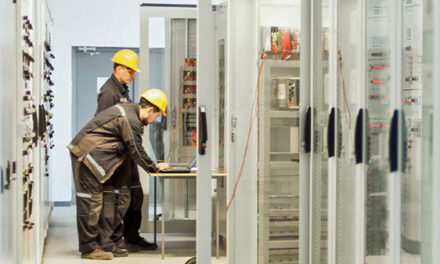 Over the last few decades, the UK enclosures market has changed out of all proportion. Steve Gallon of Fibox comments
Over the last few decades, the UK enclosures market has changed out of all proportion. Steve Gallon of Fibox comments
The UK enclosures industry has changed out of all proportion in the 30 years since some of us old-timers entered what was at the time a pretty limited market. Sheet steel enclosures were almost exclusively used for both indoor and outdoor control housing applications. GRP was seen as an expensive alternative, specified by the large water and utility companies, and the use of wall mounted plastic enclosures was basically limited to electrical contractors looking for a low cost box, with PVC being the material of choice and invariably purchased from an electrical wholesaler.
Although the sheet steel enclosure industry remains strong, the emergence of high grade thermoplastic enclosures as viable alternatives has completely changed the landscape of the industry.
Choosing an enclosure
Today’s discerning enclosure specifier must now take into account a number of factors when choosing the most suitable product for their application. Environmental considerations are now a high priority. In the vast majority of cases such decisions are made by a committee consisting of representatives from different disciplines within the company.
Original Equipment Manufacturers (OEMs) now demand far more from the enclosures they specify, and this in turn has ensured that those manufacturers serious about serving them efficiently must be able to offer a complete package of products and services. In the past the stigma relating to anything plastic proved restrictive. The perception was steel is strong and will last. Recently the horrors of PVC have been exposed by the RoHS Directive, but back then it was a case of Hobson’s Choice.
Nowadays, high grade materials such as Polycarbonate and ABS are readily available to those looking for more than just ‘a box’. IP, flammability and temperature ratings, UV stabilisation, resistance to corrosion and RoHS compliance top the list of requirements.
Customised solutions
We are all painfully aware of how hard the recent recession hit electrical and electronic manufacturing. The resulting cutbacks now mean many companies are looking to their enclosure suppliers to provide more than just the enclosure. Specifiers also often want customised products delivered to tight deadlines. From a simple hole for a cable gland or pushbutton to highly complex milling, corporate colours and graphics, internal bracketry and fixings, all of these features and much more are now the norm in the decision process.
Aesthetics have never been so important. Many companies manufacture families of products and being able to standardise on a single enclosure design in various sizes is of great importance. So to succeed, suppliers must be able to satisfy this requirement from their standard product portfolio. Variety of choice is key.
But, of course, Murphy’s Law dictates that however many options are available, there will always be a requirement which cannot be fulfilled from a standard range. By using modern tooling techniques a few enclosure companies offer the possibility of developing bespoke enclosure solutions which are viable in terms of cost and delivery lead times.
Two key factors taken into account by the specifier’s value chain relate to their production process. Many companies operate a JIT system, therefore confidence in their supplier’s ability to deliver is crucial. Alongside this is the issue of quality; and modern injection moulding techniques virtually guarantee continuity in the quality of the products being produced. A couple of manufacturers even use robots to inject molten gasket material into their enclosures to guarantee consistent quality. The result of all of this is no disruption to the client’s production due to QA rejections.
It is said that imitation is the sincerest form of flattery. As with many other areas of the electrical and electronics manufacturing industry the enclosures sector has not been spared from the insurgence of copycat products from the Far East. But looks, and more importantly promises, can be deceptive. The old adage of ‘you get what you pay for’ undoubtedly pertains. As detailed above, there is so much more to specifying a fit for purpose enclosure than just asking for the box.
Meeting requirements
So what does the future hold for the UK thermoplastic enclosure industry? Only those manufacturers willing and able to invest heavily in market driven product development, state of the art production technology, local in-depth stocks and employee development will be equipped to offer the sort of first class customer service being demanded by the market.
And let us not ignore the importance quality distribution plays, and will continue to play, in the strategy of the leading enclosure manufacturers. Reliance on local stock and trained sales personnel is crucial to the future of the industry. Once again, those producers willing to invest time and resource in maintaining a proactive distributor network will be able to serve the diverse enclosure buying market.

